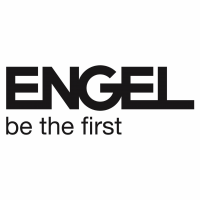The „Crown“ Coin A Brief History of UK Coinage
Following “The Great Recoinage” of 1816 however, which was to bring about stability to British currency following the Napoleonic and French Revolutionary wars, the silver crown began to be minted once more from 1818. Because of its large size, however, it has found its role as a commemorative coin, particularly of royal anniversaries, and is now regularly used for this purpose. Since 1990 it has been re-denominated as a five-pound coin but the historic name crown, which can be applied to any large white-metal coin, is still used. In 1847, William Wyon designed the next iconic crown coin – the Gothic Crown.
For forty years, from 1847 to 1887, there were no crowns produced at all. Then, in 1887, for the Golden Jubilee of Queen Victoria, the crown was minted once again, and with Pistrucci’s design of St George. Coins are issued in denominations ranging from 1 to 10 kronor and contain images and symbols of the Swedish monarchy. The obverse sides of the bills have pictures of Swedish cultural and historical figures. For example, the famed 19th-century soprano Jenny Lind is on the 50-krona note, and the 18th-century naturalist Carl von Linné (Carolus Linnaeus) is on the 100-krona bill. The reverse sides are adorned with images of the Swedish landscape, of literary passages, or of musical instruments.
- This is an important distinction, as it means they’re not exempt from taxes just because they’re royalty.
- When James I ascended the throne in 1603, he reverted the silver coins back to equestrian designs similar to those of Edward VI.
- The first modern crown was minted in 1902, with a mintage of 256,020, to celebrate the coronation of Edward VII.
- Well, most people would agree that this is the most curious of all of the pre-decimal coins.
The King and Prince William receive the profits from the duchies personally and can spend them as they wish. However, they are not entitled to any proceeds from the sale of estate assets, which must be reinvested. The cost of the King’s Coronation is still unknown, but unofficial estimates suggest it could be between £50m and £100m. The British Crown’s financial situation is a complex issue, and one aspect that’s often overlooked is the cost of security. The sceptre has been used at every coronation since Charles II’s in 1661, making umarkets review it a truly historic artifact.
When James I ascended the throne in 1603, he reverted the silver coins back to equestrian designs similar to those of Edward VI. For silver crowns, the grade of silver adhered to the long-standing standard (established in the 12th century by Henry II) – the Sterling Silver standard of 92.5% silver and 7.5% copper. This was a harder-wearing alloy, yet it was still a rather high grade of silver. It went some way towards discouraging the practice of „clipping“, though this practice was further discouraged and largely eliminated with the introduction of the milled edge seen on coins today.
- After the Union of England and Scotland in 1707 a new coin, the British Crown, replaced the English Crown and Scottish Dollar.
- It had a face value of 60 pence in ‘old’ money or one-quarter of a pound.
- Since 1990 it has been re-denominated as a five-pound coin but the historic name crown, which can be applied to any large white-metal coin, is still used.
- No new crown coins were issued during Mary’s reign and the next silver crown was issued by Elizabeth I; her crown coins showed a portrait of herself with the Royal sceptre and orb.
- Under the reign of the next monarch, King George VI, two further crowns were made.
British Plastic Money: UK’s Cashless Future Takes Shape
The legal tender value of the pre-decimal Crown remained as five shillings from 1544 to 1965. However, for most of this period there was no denominational designation or „face value“ mark displayed on the coin – people were supposed to recognise it by size and weight. From 1927 to 1939, the word „CROWN“ appears in the design, and from 1951 to 1960 this was changed to „FIVE SHILLINGS“. We, as modern American readers, have always had some problem in translating the British monetary system of the Victorian era into something more tangible, such as purchasing power. After puzzling the matter of the monies of the times off and on, we eventually asked one of our good British friends?
The quarter sovereign was introduced in 2009 as a bullion coin, giving investors a chance to own a piece of British history. The modern mintages of British crowns are a testament to the enduring popularity of these coins. From the early 20th century to the present day, British crowns have been minted in large numbers to celebrate significant events and anniversaries. The next major mintage was in 1937, with 418,699 crowns minted to celebrate the coronation of George VI. The Festival of Britain in 1951 saw a massive mintage of 1,983,540 crowns.
Crown, Coin Type from United Kingdom – detailed information
It’s highly considered by today’s collectors, but was replaced by Benedetto Pistrucci St George and the Dragon design once again in 1887. The Crown coin is an enduring piece of British coinage, with a long and winding history. Today, small numbers of Crowns are struck to commemorate big moments in British culture. But almost 500 years ago, large volumes of Crowns were issued into circulation for everyday use. The 1935 Jubilee crown was issued in a few varieties, the rarest of which is the gold-proof edition that was only available through a public ballot. It is thought that 25 were released to the public, with 28 being minted in total, and these sell for up to £100,000 at auction.
It was made of 22 carat gold (“crown gold”) and has a value of five shillings (a quarter of a pound). It was then that designer Benedetto Pistrucci produced his famous St George and the Dragon design that was to adorn the reverse of the silver crown and make its appearance on our coinage for years to come. Aside from when Britain was under the reign of Mary, and then Mary and Phillip, gold crowns continued to be issued until 1662. In terms of rare crown coins, there are a lot of examples, so we’ll take you through a few of them and how much they’re worth. Well, most people would agree that this is the most curious of all of the pre-decimal coins. It had a face value of 60 pence in ‘old’ money or one-quarter of a pound.
Gothic Queen Victoria Crown
The British Crown coin, the successor to the English Crown and the Scottish Dollar, came into being with the Union of the kingdoms of England and Scotland in 1707. As with the English coin, its value was five shillings, or sixty pence – one shilling being twelve pence. When Queen Elizabeth II succeeded the throne in 1953 a crown coin was issued, and it is incredible to think that just this year the Platinum Jubilee was commemorated with another crown coin. After the Norman Conquest in 1066, the pound was divided into twenty shillings or 240 pennies. It remained so until decimalization on 15 February 1971, when the pound was divided up as it is still done today. A crown is the English translation of a unit of currency used in Norway, Sweden, Denmark (including the Faroe Islands and Greenland), Iceland, and the Czech Republic.
CoinParade Coin Database
The raised edge proof version is no slouch either, and confirmed errors of this coin can sell for up to £10,000. A more recent crown from the 20th century is the 1980 Queen Mother crown, which was issued to honour the 80th Birthday of the Queen Mother. After this, it started to become more of a commemorative coin rather than one used in daily life.
The crown, originally known as the „crown of the double rose“, was an English coin introduced as part of King Henry VIII’s monetary reform of 1526, with a value of 1⁄4 of one pound, or five shillings, or 60 pence. The British silver crown was always a large coin, and from the 19th century it did not circulate well. However, crowns were usually struck in a new monarch’s coronation year, from George IV to Elizabeth II in 1953, with the exceptions of George V and Edward VIII. King Charles doesn’t have to pay inheritance tax on the money he received from Queen Elizabeth’s estate, thanks to a special exemption agreed upon by then Prime Minister John Major in 1993.
Today crown coins are usually issued to mark special occasions of national importance and umarkets forex broker overview are intended to be commemoratives rather than ordinary circulation coins. Before the crown was adopted, Sweden had several monetary units, including the riksdaler, which the crown replaced. The crown was introduced as Sweden’s monetary unit in 1873, when the country became part of the Scandinavian Monetary Union (SMU) and the coins of Denmark and Norway became legal tender within Sweden. The Swedish-Norwegian union was renegotiated in 1905, and Sweden abandoned the SMU in 1931.
St. Edward’s Crown is an incredible piece of history, worth an estimated $57 million. It’s made of nearly 5 pounds of solid gold, set with abstinence violation effect more than 444 precious and semi-precious stones. The Royal Mint discontinued the coin after 1981 due to the cost of minting such a large coin with such a low monetary value.
The composition of the silver crowns was the sterling silver standard of 92.5 per cent silver and 7.5 per cent copper, established in the 12th century by Henry II. The hardness discouraged the practice of „clipping“, and this practice was further discouraged (and largely eliminated) with the introduction of the milled edge. The silver crown was one of a number of European silver coins which first appeared in the 16th century, all of which were of a similar diameter (about 38 millimetres) and weight (approximately one ounce)


 Bedienpulte
Bedienpulte Industrie PC
Industrie PC Tablet PC
Tablet PC Industrie Monitore
Industrie Monitore Industrietastaturen
Industrietastaturen Ersatzmonitore
Ersatzmonitore LED-Anzeigen
LED-Anzeigen







